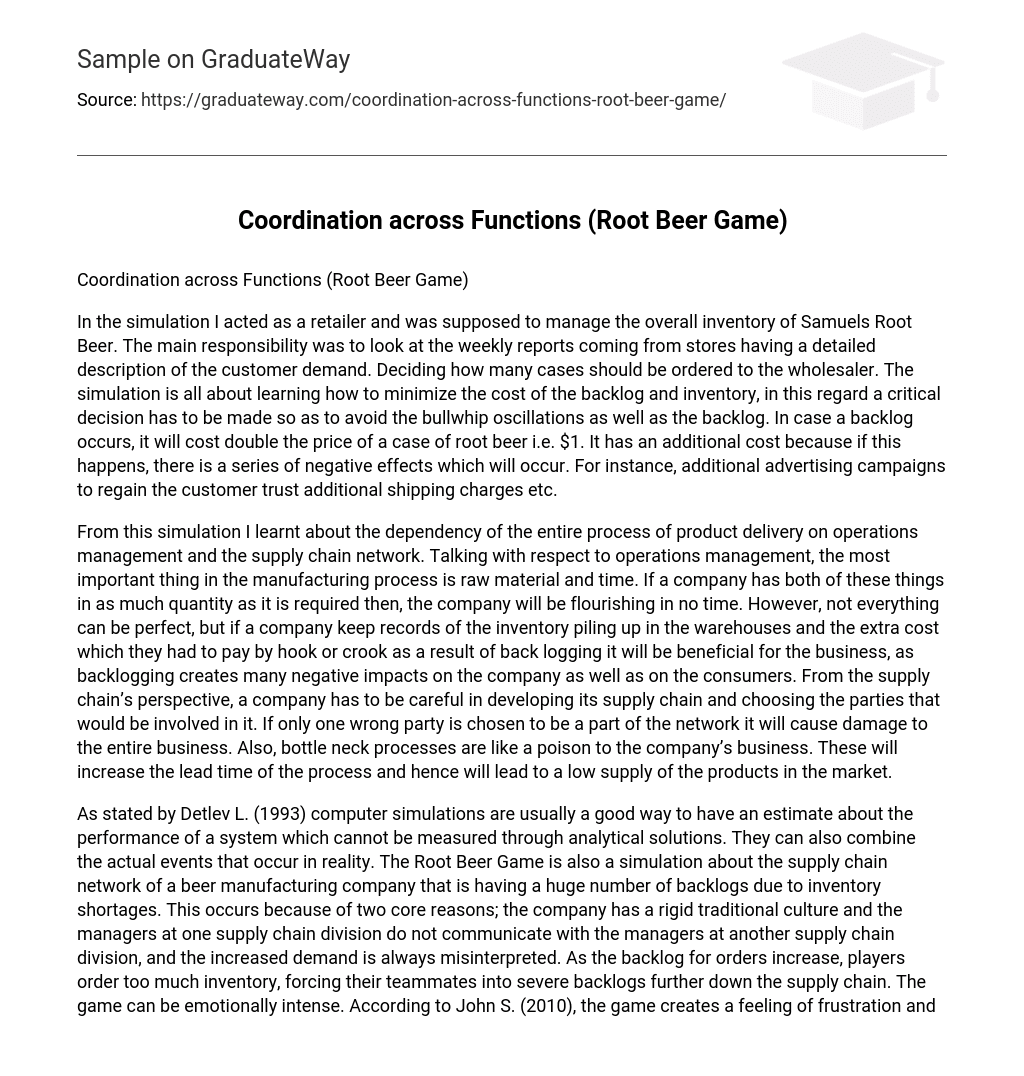In the simulation I acted as a retailer and was supposed to manage the overall inventory of Samuels Root Beer. The main responsibility was to look at the weekly reports coming from stores having a detailed description of the customer demand. Deciding how many cases should be ordered to the wholesaler. The simulation is all about learning how to minimize the cost of the backlog and inventory, in this regard a critical decision has to be made so as to avoid the bullwhip oscillations as well as the backlog. In case a backlog occurs, it will cost double the price of a case of root beer i.e. $1. It has an additional cost because if this happens, there is a series of negative effects which will occur. For instance, additional advertising campaigns to regain the customer trust additional shipping charges etc.
From this simulation I learnt about the dependency of the entire process of product delivery on operations management and the supply chain network. Talking with respect to operations management, the most important thing in the manufacturing process is raw material and time. If a company has both of these things in as much quantity as it is required then, the company will be flourishing in no time. However, not everything can be perfect, but if a company keep records of the inventory piling up in the warehouses and the extra cost which they had to pay by hook or crook as a result of back logging it will be beneficial for the business, as backlogging creates many negative impacts on the company as well as on the consumers. From the supply chain’s perspective, a company has to be careful in developing its supply chain and choosing the parties that would be involved in it. If only one wrong party is chosen to be a part of the network it will cause damage to the entire business. Also, bottle neck processes are like a poison to the company’s business. These will increase the lead time of the process and hence will lead to a low supply of the products in the market.
As stated by Detlev L. (1993) computer simulations are usually a good way to have an estimate about the performance of a system which cannot be measured through analytical solutions. They can also combine the actual events that occur in reality. The Root Beer Game is also a simulation about the supply chain network of a beer manufacturing company that is having a huge number of backlogs due to inventory shortages. This occurs because of two core reasons; the company has a rigid traditional culture and the managers at one supply chain division do not communicate with the managers at another supply chain division, and the increased demand is always misinterpreted. As the backlog for orders increase, players order too much inventory, forcing their teammates into severe backlogs further down the supply chain. The game can be emotionally intense. According to John S. (2010), the game creates a feeling of frustration and helplessness among the players. Most of the players blame their team mates for not giving the proper order. Hence, an entire havoc is created down the supply chain of the Beer manufacturing company creating very low chances to achieve the objective of the having the cost minimized to its best possible level.
References
Detlev L. (1993), “Guided discovery learning with computer-based simulation games: Effects of adaptive and non-adaptive instructional support,” Journal of Learning and Instruction.
Forio Business Simulations, (2010), “Supply Chain Management Simulation: Root Beer Game,” Harvard Business Publishing.
John S. (2010), “A Review of Root Beer Simulation,” MIT’s Sloan School of Management.





